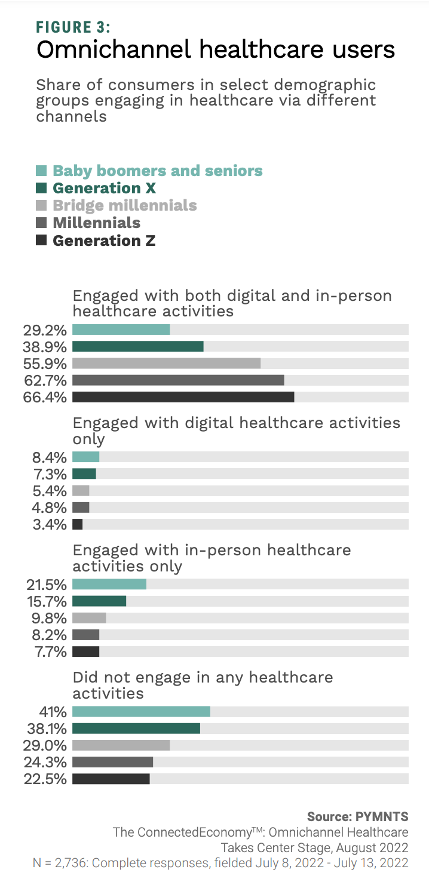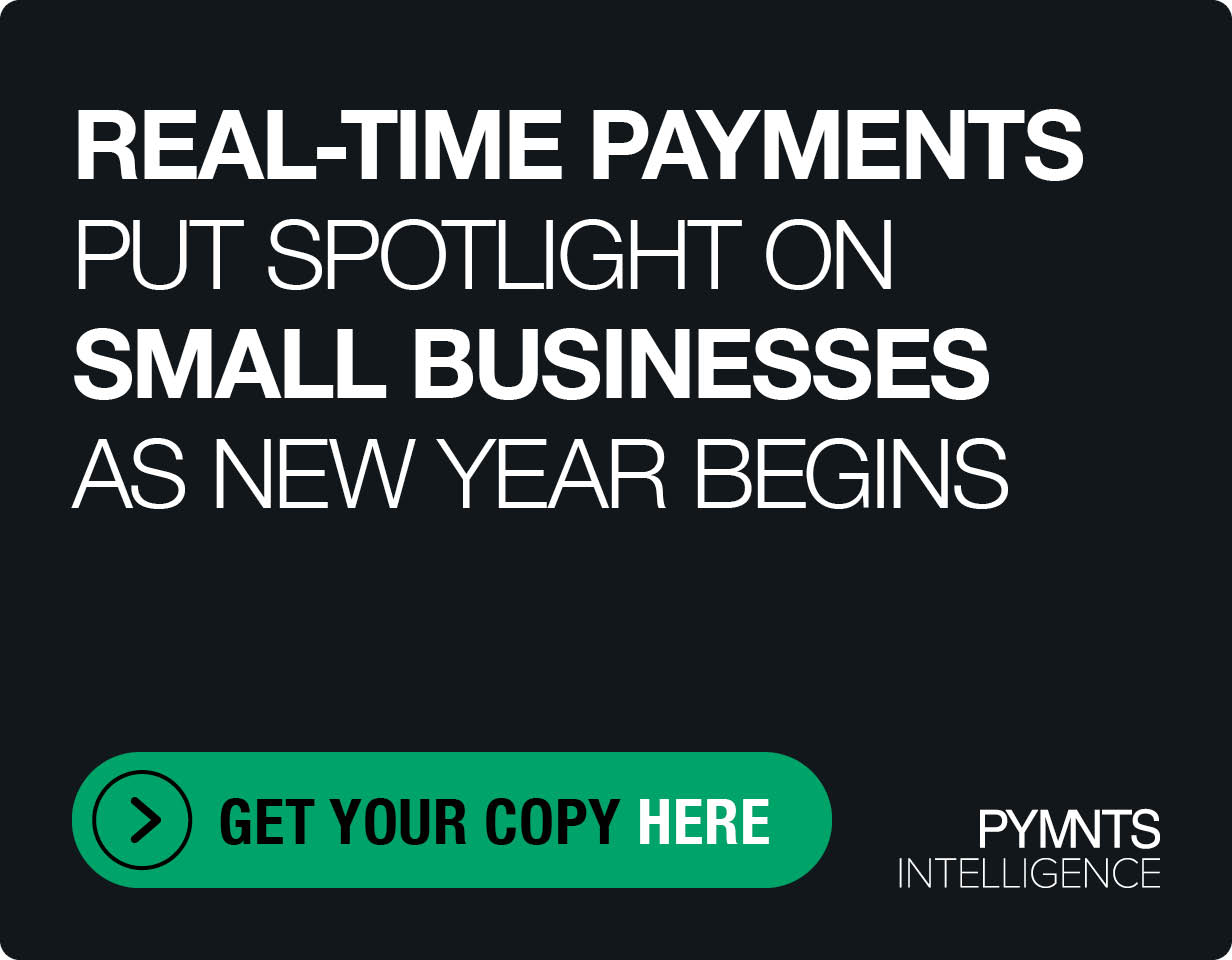Gen Z Is ‘Generation Digital Health’ as 62% Use Digital Patient Portals

Healthcare is essential for consumers of all ages, but different generations tend to obtain their healthcare products and services very differently. Catering to generation patterns and preferences is critical to healthcare organizations, to optimize healthy people — and providers.

Analyzing demographic differences in digital healthcare access and usage, “The ConnectedEconomy™: Omnichannel Healthcare Takes Center Stage,” a PYMNTS report with research sponsored by CareCredit, found that digital engagement crosses age boundaries, but there are wide variations in the extent of use and the digital tools favored by age group.
Based on a survey of 2,735 consumers, the study states that “Patients in different age groups tend to gravitate toward very different digital activities, choosing whichever best suits their personal health needs. The most common digital healthcare activity in which baby boomers and seniors engage, for example, is using a website or app provided by their physicians to access healthcare information, check appointments and lab results or make payments,” with 21% of baby boomers and seniors using this type of patient portal.
Contrast that with the 39% of Generation X consumers, 63% of millennials, and 56% of bridge millennials that use “a mix of in-person and digital healthcare options, showing that omnichannel healthcare is now a near-universal phenomenon in the United States.”
Delving into the data, we find that “Gen Z engages in every type of digital healthcare activity more than other generations. The most common activities in which they engage include using patient portals (62%) and keeping telemedicine appointments (55%).”
Baby boomers and seniors are the most likely to engage in in-person healthcare activities exclusively, such as going to a doctor’s office in person. Baby boomers and seniors are also the most likely to say that they do not engage in any type of healthcare-related activity at all.
This data drives home a point made in the study: 46% of all consumers in the U.S. — a projected 119 million patients — now engage with their healthcare providers using a mix of patient portals, telehealth appointments, apps and in-person visits. And the number of these so-called “omnichannel patients” is growing monthly.
Get your copy: The ConnectedEconomy™: Omnichannel Healthcare Takes Center Stage

